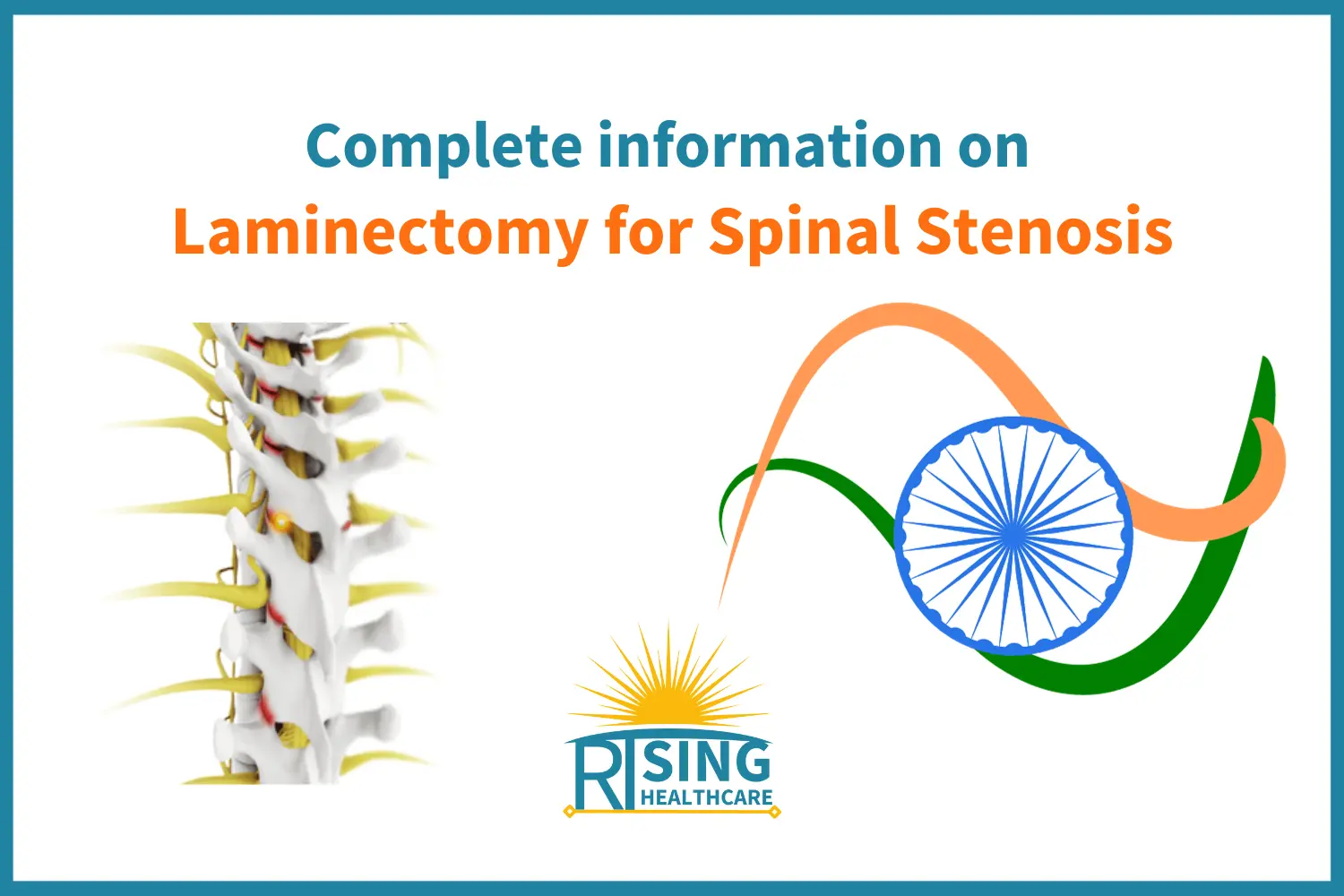
Understanding Laminectomy for Spinal Stenosis: Surgery, Procedure, and Recovery
Introduction
If you’ve been dealing with back pain, weakness, or numbness in your lower back and legs, it could be due to a condition called spinal stenosis. Spinal stenosis is a common ailment that often affects older adults. Fortunately, medical advancements have led to effective treatments like lumbar laminectomy. In this article, we’ll explore what lumbar laminectomy is, how the surgery works, and what you can expect during the procedure and recovery.
Contents
What is Spinal Stenosis?
Before we dive into lumbar laminectomy, let’s understand the condition it aims to treat: spinal stenosis. Think of your spine as a protective tunnel for your spinal cord and nerves. Spinal stenosis occurs when this tunnel narrows, putting pressure on the spinal cord and nerves. It’s like a crowded subway during rush hour – too many people in a tight space can lead to discomfort and even pain.
The most common cause of spinal stenosis is aging. As we grow older, the wear and tear on our spine can cause the discs between our vertebrae to shrink and the ligaments to thicken. These changes can reduce the space in the spinal canal and lead to spinal stenosis.
What is a Laminectomy?
Now that we have a grasp of spinal stenosis let’s move on to lumbar laminectomy, a surgical procedure aimed at relieving the symptoms of spinal stenosis. But first, what exactly is a laminectomy?
A laminectomy is a surgical procedure performed on the spine to relieve pressure on the spinal cord and nerves. The procedure involves the removal of a portion of the vertebral bone called the lamina, which forms the back portion of the spinal canal. By removing the lamina, surgeons create more space in the spinal canal, reducing the pressure on the spinal cord and nerves.
When is Laminectomy Surgery Necessary?
Laminectomy surgery is typically recommended when conservative treatments like physical therapy, medication, or lifestyle changes have not provided adequate relief from the symptoms of spinal stenosis. Here are some common signs and symptoms that might indicate the need for laminectomy surgery:
- Severe Pain: If you’re experiencing persistent and severe back pain that radiates down your legs, you might need a laminectomy.
- Numbness and Weakness: When spinal stenosis causes numbness or weakness in your legs, making it difficult to walk or perform daily activities, surgery may be necessary.
- Loss of Bladder or Bowel Control: In rare cases, severe spinal stenosis can lead to loss of bladder or bowel control, which is a medical emergency requiring immediate surgery.
- Progressive Symptoms: If your symptoms are getting worse over time, surgery may be recommended to prevent further nerve damage.
The Laminectomy Procedure
Now that you understand why laminectomy surgery is necessary, let’s explore how the procedure is performed. Laminectomy can be done on different parts of the spine, but in the context of spinal stenosis, we’ll focus on lumbar laminectomy, which targets the lower back.
1. Anesthesia: The first step in any surgery is anesthesia. You’ll be given either general anesthesia, which puts you to sleep throughout the procedure, or local anesthesia with sedation, which numbs the lower part of your body and keeps you relaxed.
2. Incision: Once you’re under anesthesia, the surgeon will make a small incision in your lower back over the affected area. This allows them to access the spine.
3. Removal of Lamina: The surgeon will carefully remove the lamina from one or more vertebrae in your lower back. This step is crucial because it creates more space in the spinal canal, relieving the pressure on the spinal cord and nerves.
4. Addressing Other Issues: In some cases, the surgeon may need to address other issues like herniated discs or bone spurs during the procedure. This ensures that all potential sources of pressure on the spinal cord and nerves are addressed.
5. Closure: After the necessary adjustments to your spine have been made, the incision is closed with sutures or staples, and a sterile bandage is applied.
Recovery and Post-Operative Care
After your laminectomy surgery, you’ll be moved to a recovery area, and medical staff will monitor your vital signs as you wake up from anesthesia. Here’s what you can expect during the recovery process:
1. Hospital Stay: Depending on your overall health and the complexity of the surgery, you may need to stay in the hospital for a few days. During this time, you’ll receive pain management, physical therapy, and instructions on how to care for your incision.
2. Pain Management: It’s normal to experience some pain and discomfort after the surgery. Your doctor will prescribe pain medications to keep you comfortable during the healing process.
3. Mobility: Gradually, you’ll be encouraged to get out of bed and start moving around. Early mobility is important to prevent complications like blood clots and muscle atrophy.
4. Physical Therapy: Physical therapy plays a crucial role in your recovery. A physical therapist will work with you to improve your strength and flexibility and help you regain your ability to walk and perform daily activities.
5. Incision Care: You’ll need to keep your incision clean and dry to prevent infection. Your healthcare team will provide instructions on how to care for it, and you should follow them closely.
6. Follow-up Appointments: You’ll have follow-up appointments with your surgeon to monitor your progress and make sure your spine is healing properly.
Risks and Complications
While laminectomy is generally considered safe, like any surgical procedure, it carries some risks and potential complications. It’s essential to be aware of these, although they are relatively rare:
- Infection: Any surgery carries a risk of infection. To minimize this risk, it’s crucial to keep the incision site clean and follow your doctor’s instructions for care.
- Bleeding: Excessive bleeding during or after surgery is possible but uncommon. Your surgical team will take steps to control bleeding during the procedure.
- Nerve Damage: In rare cases, there may be damage to nerves during the surgery. This can lead to new or worsened symptoms. Surgeons take great care to avoid this complication.
- Spinal Fluid Leak: The spinal cord is surrounded by fluid, and a leak can occur in rare cases. This can cause headaches and require further treatment.
- Blood Clots: Prolonged immobility after surgery can increase the risk of blood clots. Your healthcare team will take measures to prevent this, such as using compression stockings and encouraging early mobility.
Long-Term Outlook
The goal of lumbar laminectomy is to relieve the symptoms of spinal stenosis and improve your quality of life. Most people experience significant pain relief and improved mobility after the surgery. However, it’s essential to remember that recovery can take time, and patience is key.
Physical therapy and rehabilitation play a crucial role in the long-term success of the procedure. Your commitment to following your healthcare provider’s instructions and attending follow-up appointments will greatly influence your recovery.
Conclusion
In summary, lumbar laminectomy is a surgical procedure designed to alleviate the symptoms of spinal stenosis by creating more space in the spinal canal. While it is a relatively common and safe surgery, it’s essential to consider all the risks and benefits and work closely with your healthcare team to make informed decisions about your treatment.
If you’re experiencing symptoms of spinal stenosis, such as severe back pain, numbness, weakness, or difficulty walking, consult with a healthcare provider. They will evaluate your condition, explore conservative treatment options, and discuss the possibility of a laminectomy if necessary.
Remember that your health and well-being are paramount, and medical professionals are here to guide you through the process, from diagnosis to treatment and recovery. With the right care and support, you can regain your mobility and live a more comfortable, pain-free life after lumbar laminectomy surgery.

